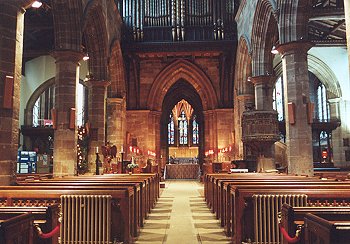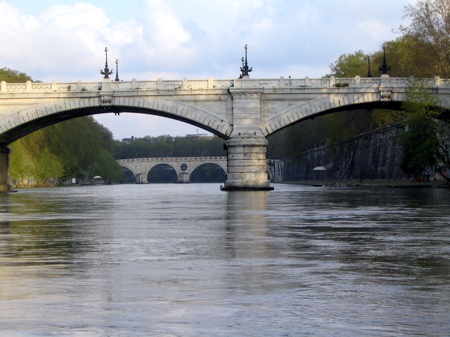

 |
|||||||||||
 |
|||||||||||
Castel Sant' Angelo |
Also known as Mausoleum of Hadrian. Originally it was built under the Roman Empire in the 2nd century by emperor Hadrian as a funerary monument. It lost it's function as a tomb to become a fortress. |
|
| Cupola | a. a light structure on a dome or roof, serving as
a belfry, lantern, or belvedere. |
|
| Basilica | 1. An early Christian or medieval church of the type
built esp. in Italy, characterized by a plan including a nave, two or
four side aisles, a semicircular apse, a narthex, and often other features,
as a short transept, a number of small semicircular apses terminating
the aisles, or an atrium. The interior is characterized by strong horizontality,
with little or no attempt at rhythmic accents. All spaces are usually
covered with timber roofs or ceilings except for the apse or apses, which
are vaulted. |
|
| Mediterranean | The region surrounding the Mediterranean Sea. Several important ancient civilizations flourished in the region, which was dominated for millennia by Phoenicia, Carthage, Greece, Sicily, and Rome. |
|
| Ecclesiastical | Of or relating to a church especially as an established institution |
|
| Italian Renaissance | The Italian Renaissance began at the opening phase of the Renaissance, a period of cultural change and achievement in Europe that spanned the period from the end of the 14th century to about 1600, marking the transition between Medieval and Early Modern Europe. |
|
| Nave | The principal longitudinal area of a church, extending from the main entrance or narthex to the chancel, usually flanked by aisles of less height and breadth: generally used only by the congregation. |
 |
| Martyrdom |
Death that is imposed because of the person's adherence of a religious faith or cause.
|
|
| Baldachin | Architectural canopy supported by slender columns marking and enclosing a specific spot in the church, usually the altar. |
|
River Tiber |
The Tiber (Italian Tevere, Latin Tiberis) is the third-longest river in Italy, flowing 406 kilometres through Umbria and Lazio to the Tyrrhenian Sea. It drains a basin estimated at 18,000 km². The river is the main watercourse of the city of Rome, founded on its eastern banks. |
 |